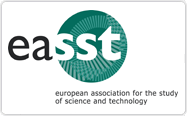Reconsidering the Mode 2 and the Triple Helix
A Critical Comment Based on a Case Study
DOI:
https://doi.org/10.23987/sts.55144Abstract
This paper takes a critical stand towards the Mode-2 thesis and the Triple-Helix model as schemes to describe the association of university research with applied motives and commercial and industrial actors. By drawing from a case study of a plant-biotechnology research group, which transformed into a start-up company, the paper suggests that using these models as conceptual frameworks in the empirical analysis may run the risk of glossing over some vital conceptual insights. The first instance where more focused attention should be given is the analytic distinction between theoretical, methodological and applied dimensions of a local research program. By appreciating it, a central source of dynamic that formed the ground for the commercialization of the group’s research results is preserved. The second deficiency is that neither the Mode 2 nor the Triple Helix pays close enough attention to the problems and contradictions that come into the world as university research results are commercialized. In this respect, three problem areas are addressed: 1) the ownership of intellectual property rights, 2) the industrial collaboration and the difficulties of transferring the research results to the market, and 3) the failed attempt of creating a hybrid community between the research group and the spin-off company. Also these should be given a more central role in the models since they seem to be vital challenges for researchers-entrepreneurs as they move from academic to industrial focus.





